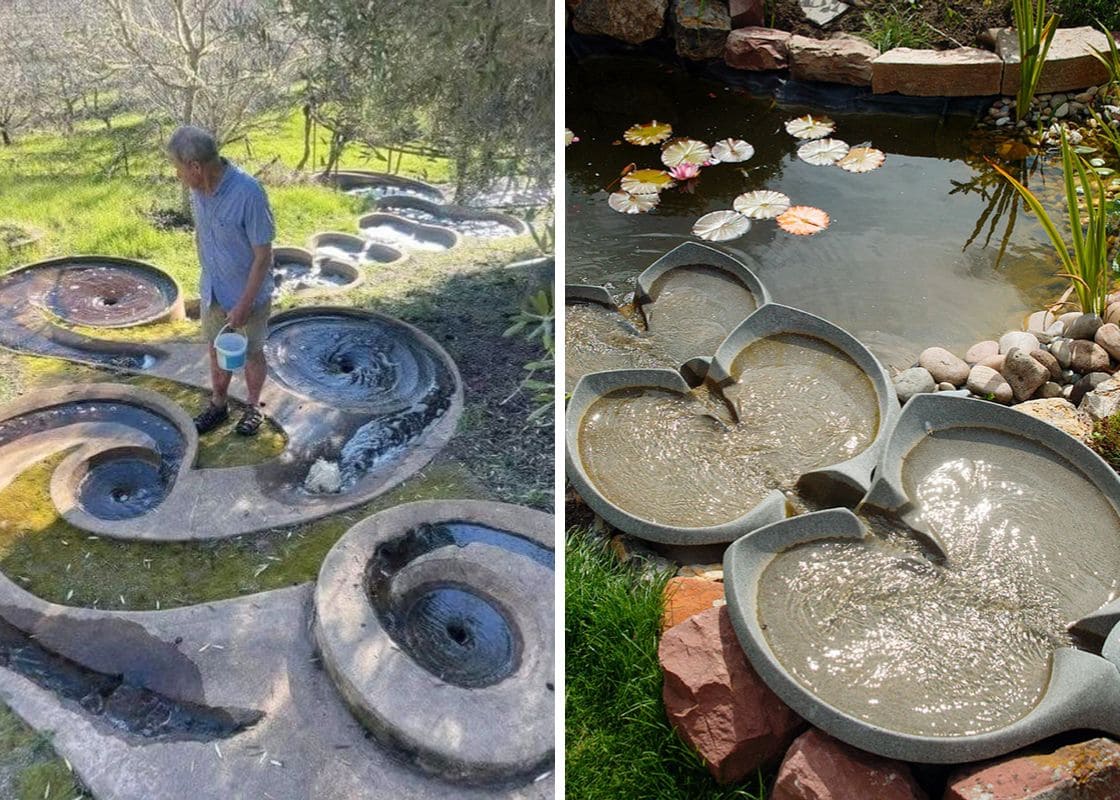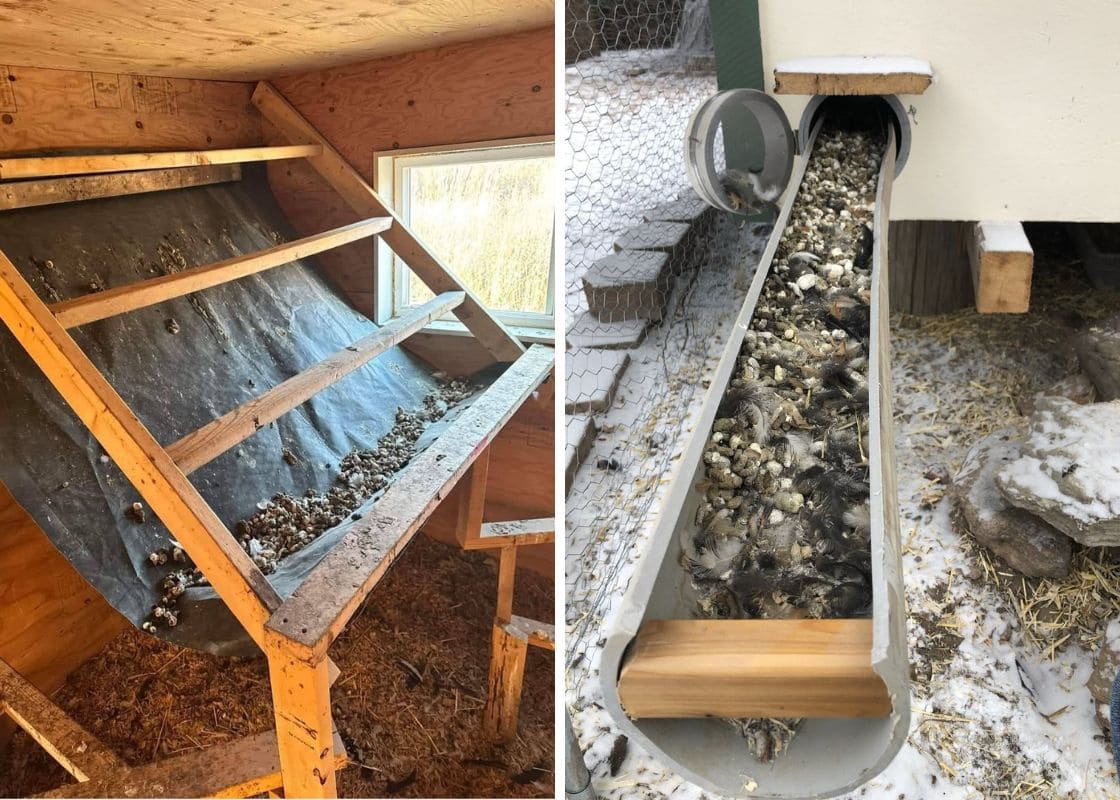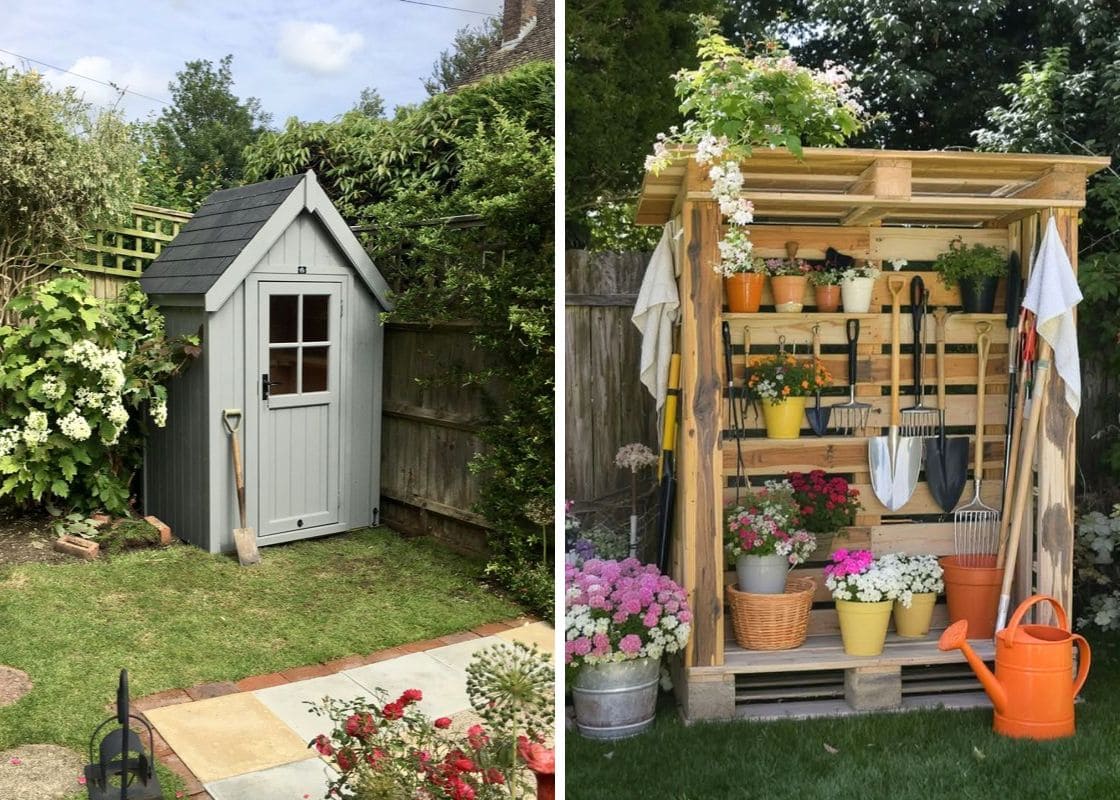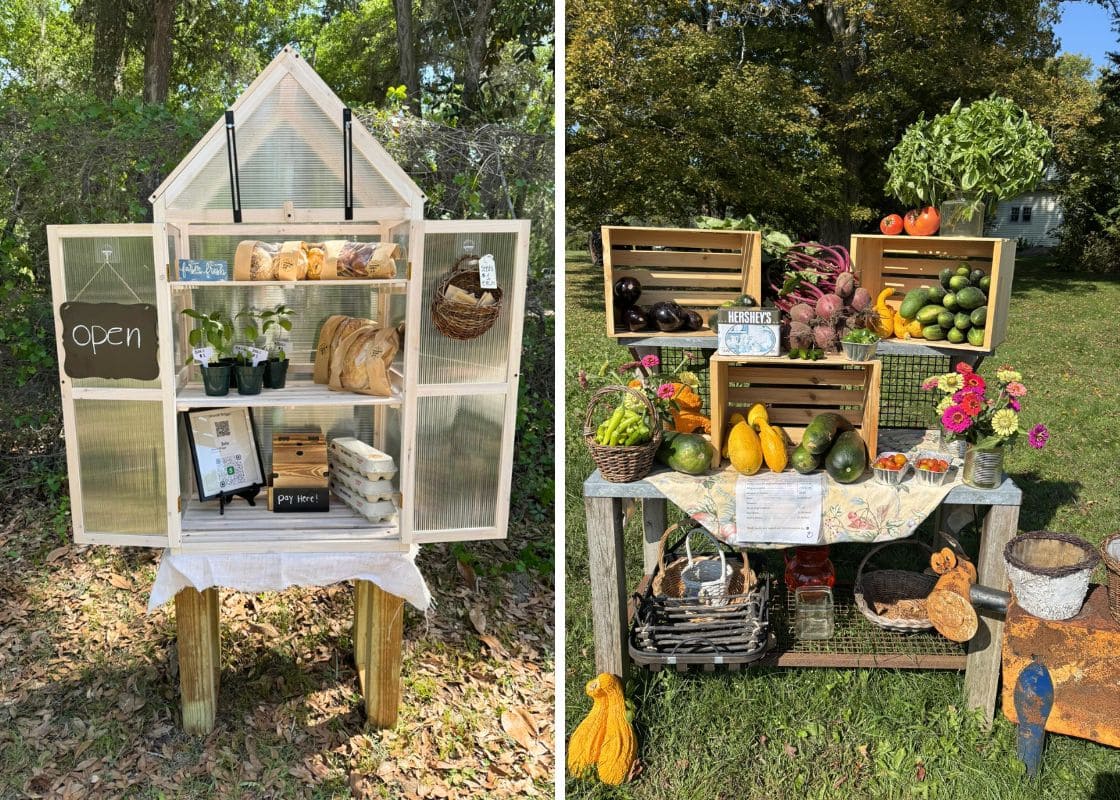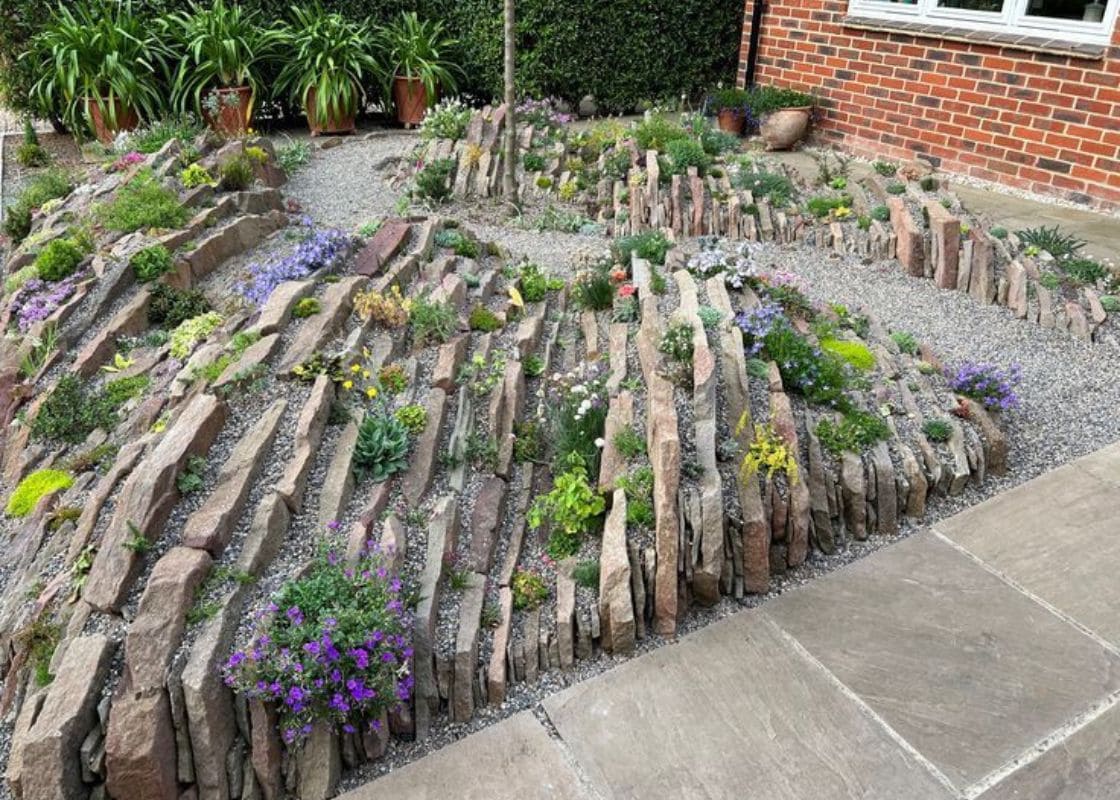Hydrangeas have a way of softening any space. With their generous blooms and timeless charm, they feel like nature’s version of a love letter written in petals.
Whether you’re curating a cottage garden, framing a walkway, or hunting for something that thrives in part-shade, there’s a hydrangea out there waiting to shine in your landscape.
Below are 12 standout varieties, from classics to lesser-known gems, each with their own flair.
1. Bigleaf Hydrangea (Hydrangea macrophylla)

- Growing conditions: Morning sun, afternoon shade; moist, well-drained soil
- Size and Shape: 3–6 feet tall and wide; rounded shrub
- Best uses: Foundation plantings, shady borders, containers
Bigleaf hydrangeas are the drama queens of the hydrangea world. Their large mophead or lacecap blooms are famous for shifting between blue and pink based on soil acidity.
They bloom mostly in summer and may rebloom in fall. Regular watering, light mulch, and light pruning right after blooming keep them at their best.
2. Panicle Hydrangea (Hydrangea paniculata)
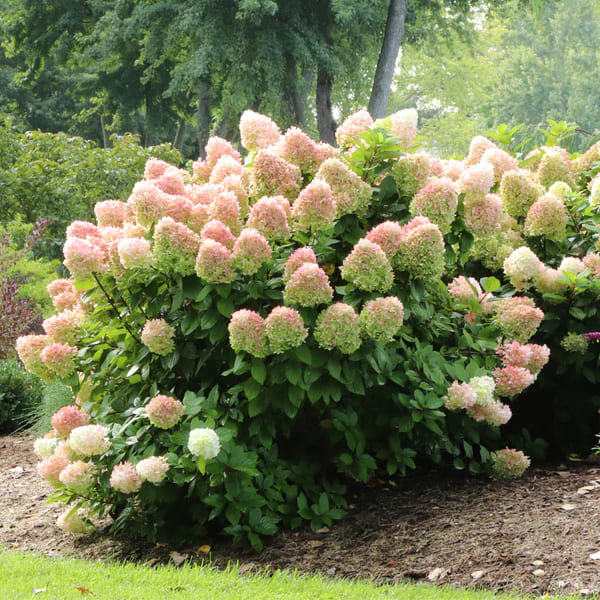
- Growing conditions: Full sun to part shade
- Size and shape: 6–15 feet tall depending on variety
- Best uses: Hedges, large borders, cut flower gardens
Panicle hydrangeas are heat-tolerant and incredibly forgiving. Their cone-shaped blooms shift from creamy white to pinkish-red as the season matures.
Unlike most hydrangeas, they thrive in more sun and can be pruned hard in early spring for vigorous new growth.
3. Oakleaf Hydrangea (Hydrangea quercifolia)
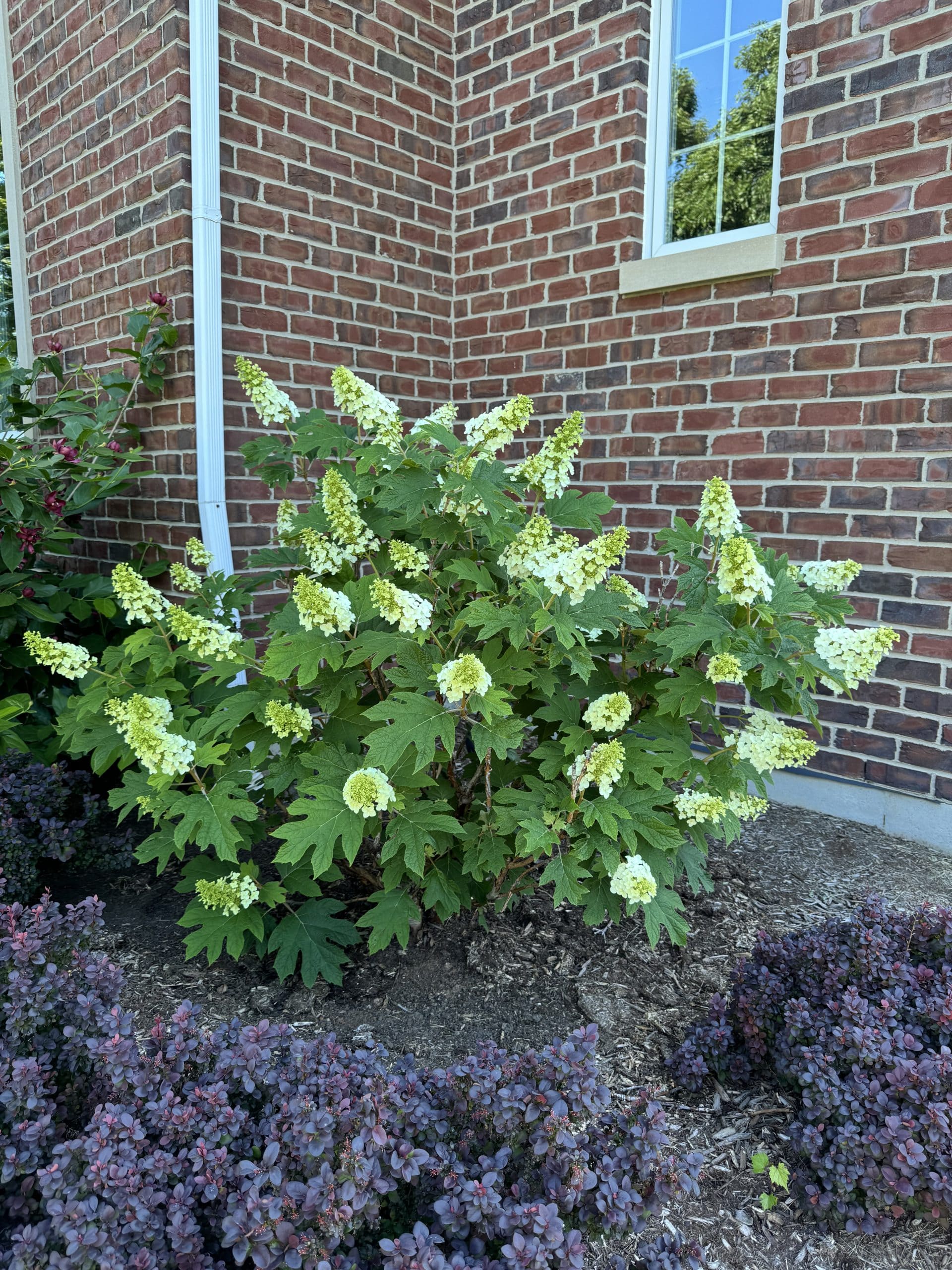
- Growing conditions: Part shade; well-drained, slightly acidic soil
- Size and shape: 4–8 feet tall and wide; spreading, woody shrub
- Best uses: Woodland gardens, naturalized areas, fall interest
This Southern native stands out with its bold, lobed foliage and elongated white flower clusters.
As fall approaches, the leaves turn rich shades of crimson and bronze, making it one of the best multi-season shrubs. It’s also deer-resistant and handles drier soil better than most hydrangeas.
4. Smooth Hydrangea (Hydrangea arborescens)
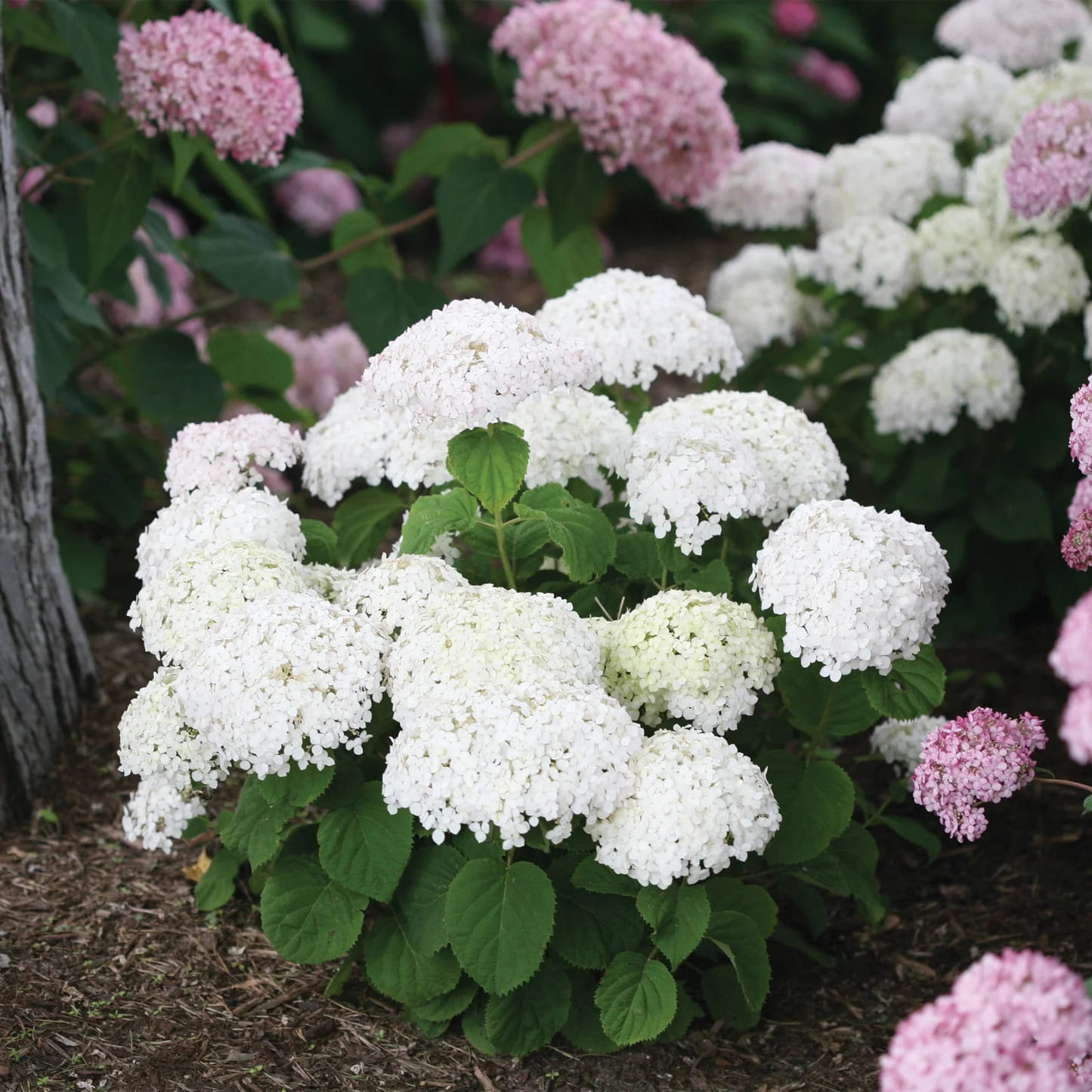
- Growing conditions: Part shade; moist, rich soil
- Size and shape: 3–5 feet tall and wide; rounded habit
- Best uses: Native gardens, slopes, erosion control, mass planting
Known for the beloved ‘Annabelle’ cultivar, smooth hydrangeas offer enormous, snowball-like blooms in early to mid-summer.
They bloom on new wood, making them reliable even after tough winters. Cut them back hard in late winter for showier flowers.
5. Climbing Hydrangea (Hydrangea anomala petiolaris)
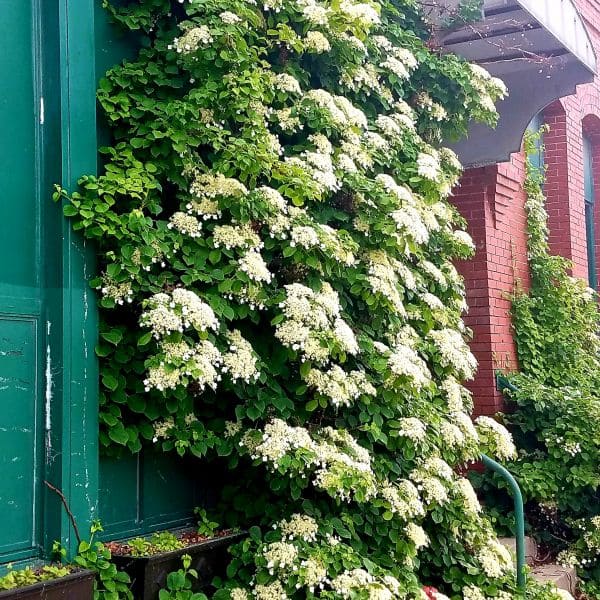
- Growing conditions: Part to full shade; fertile, moist soil.
- Size and shape: Up to 50 feet long; woody vine.
- Best uses: Walls, fences, tree trunks, arbors.
Climbing hydrangeas are slow starters but incredibly rewarding. Once established, their clinging vines and white lacecap flowers bring vertical charm.
Their bark even exfoliates for winter interest. Minimal pruning is needed, just enough to control size.
6. Mountain Hydrangea (Hydrangea serrata)
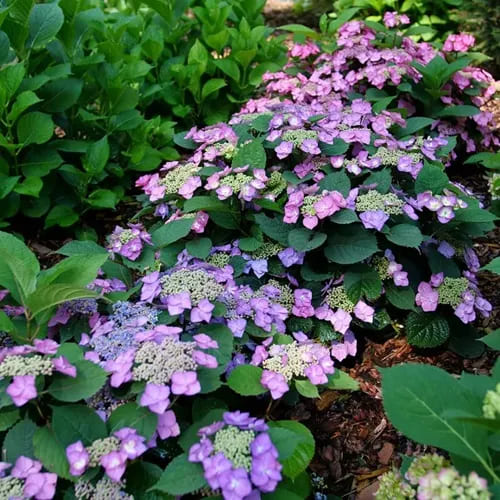
- Growing conditions: Part shade; acidic, well-drained soil
- Size and shape: 2–4 feet tall and wide
- Best uses: Borders, shade gardens, small spaces
Smaller and hardier than Bigleafs, Mountain hydrangeas are more cold-tolerant and produce delicate lacecap blooms.
They respond well to aluminum sulfate for blue flowers and are ideal for gardens in cooler climates. Prune lightly after blooming to maintain shape.
7. ‘Limelight’ Hydrangea (Hydrangea paniculata ‘Limelight’)

- Growing conditions: Full sun to part shade; average garden soil
- Size and shape: 6–8 feet tall and wide
- Best uses: Screening, accent plants, fresh or dried arrangements
‘Limelight’ delivers a punch of pale green blooms that fade into rose and burgundy shades by fall.
Its strong stems make it a favorite among florists, and it’s one of the easiest hydrangeas to grow. Just prune it back in early spring for big, bold blooms.
8. ‘Little Lime’ Hydrangea (Hydrangea paniculata ‘Little Lime’)
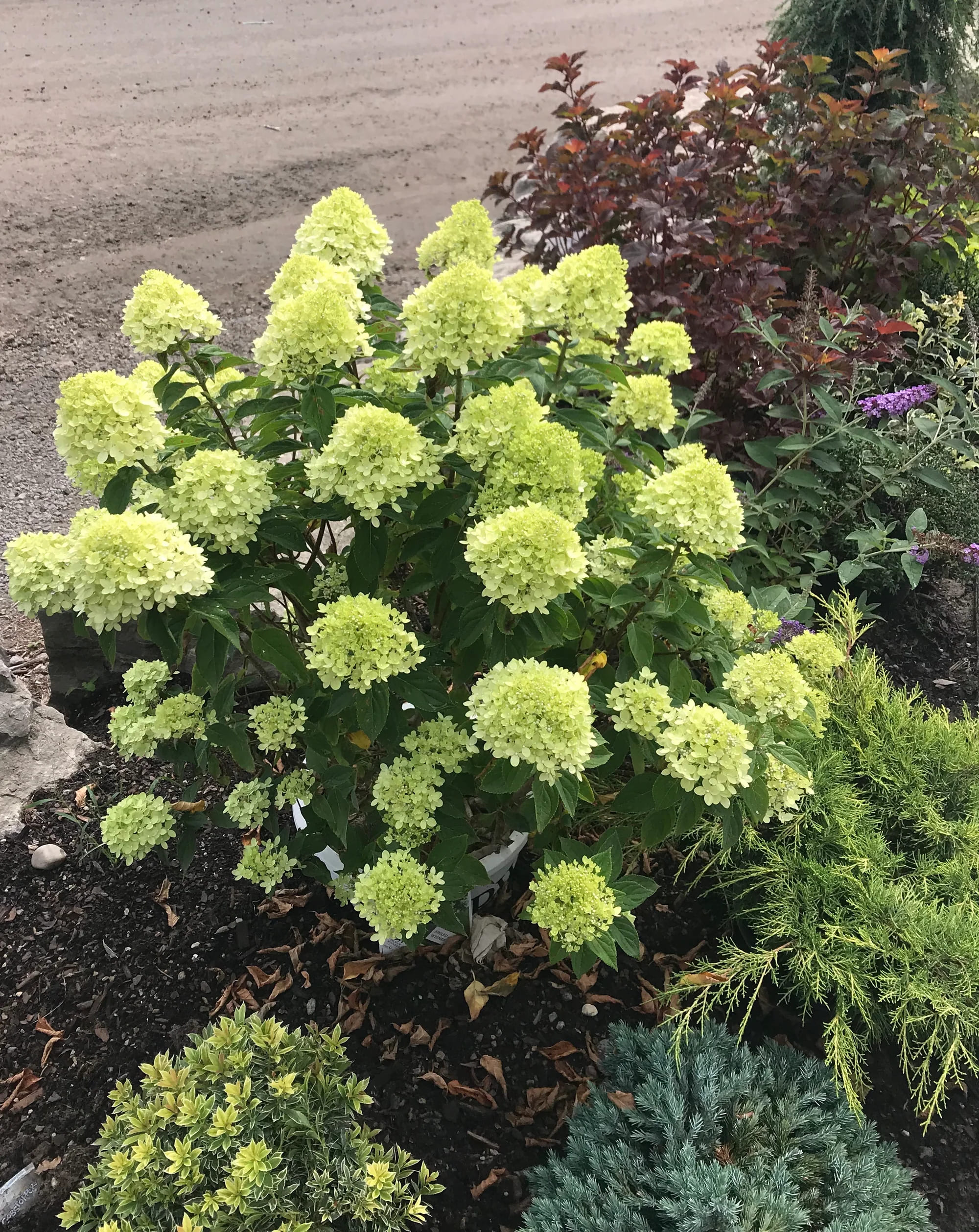
- Growing conditions: Full sun to part shade; well-drained soil
- Size and shape: 3–5 feet tall and wide
- Best uses: Containers, front borders, foundation plantings
A dwarf version of ‘Limelight,’ ‘Little Lime’ is perfect for small gardens. It shares the same green-to-pink bloom shift and requires minimal care beyond seasonal pruning and occasional feeding.
It’s a reliable bloomer and stays neat without effort.
9. ‘Endless Summer’ Hydrangea (Hydrangea macrophylla)
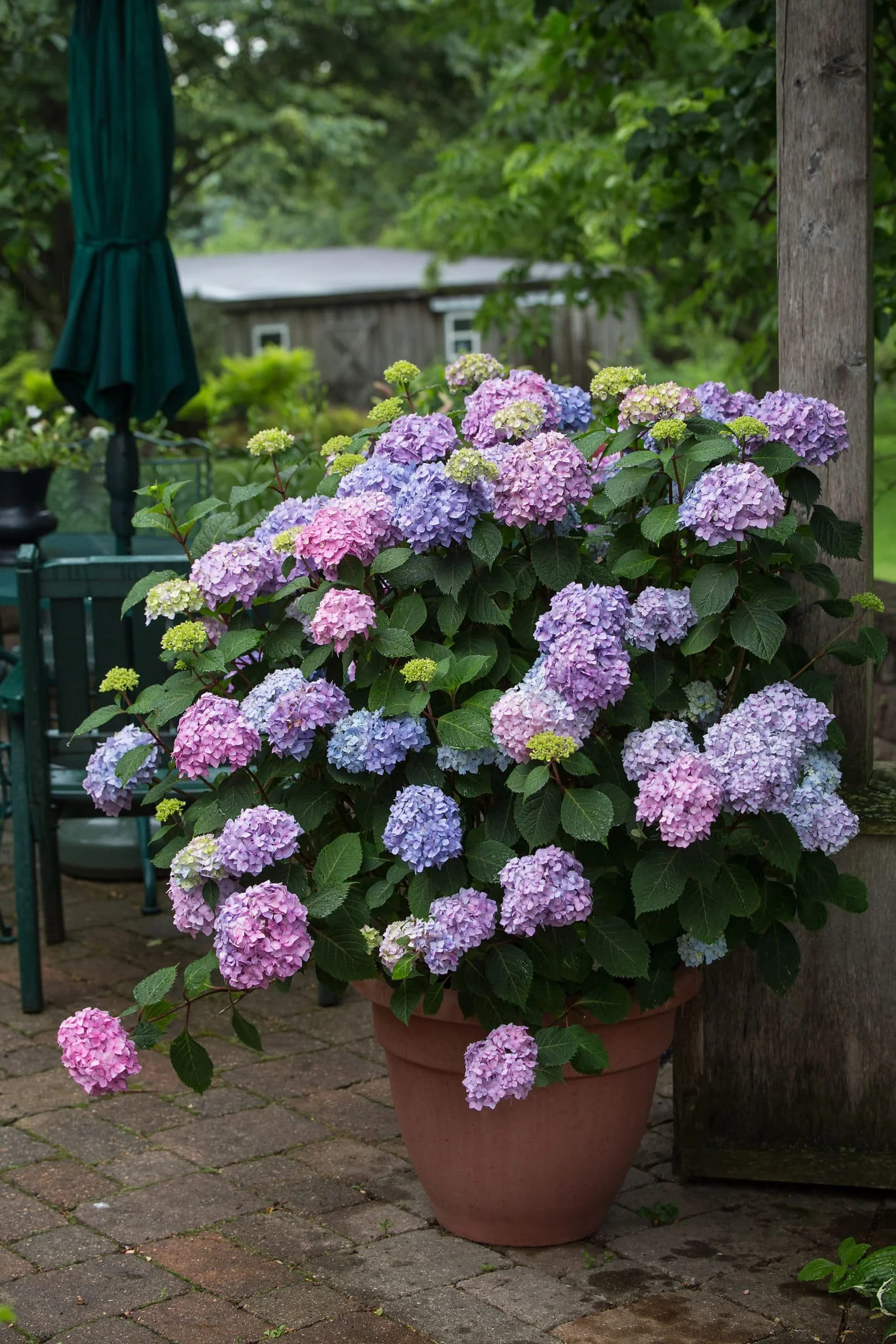
- Growing conditions: Part sun; moist, rich soil with good drainage
- Size and shape: 3–5 feet tall and wide
- Best uses: Repeating bloom borders, high-impact front gardens
The original reblooming hydrangea, ‘Endless Summer’ changed the game by flowering on both old and new wood. It’s ideal for climates with late frosts where traditional types fail.
Adjust the soil pH for blue or pink blossoms, either way, it never stops showing off.
10. ‘Invincibelle Spirit’ Hydrangea (Hydrangea arborescens)
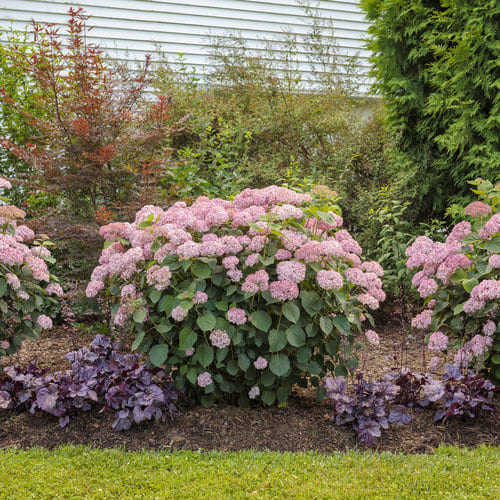
- Growing conditions: Part sun to full sun in cooler climates; moist soil
- Size and shape: 3–4 feet tall and wide
- Best uses: Pollinator gardens, pink-themed borders, charity-focused gardening
This cultivar brings pink into the typically white world of smooth hydrangeas. It blooms from mid-summer to fall and is incredibly easy to care for—just prune it low each year and let it thrive.
11. ‘Tardiva’ Hydrangea (Hydrangea paniculata ‘Tardiva’)
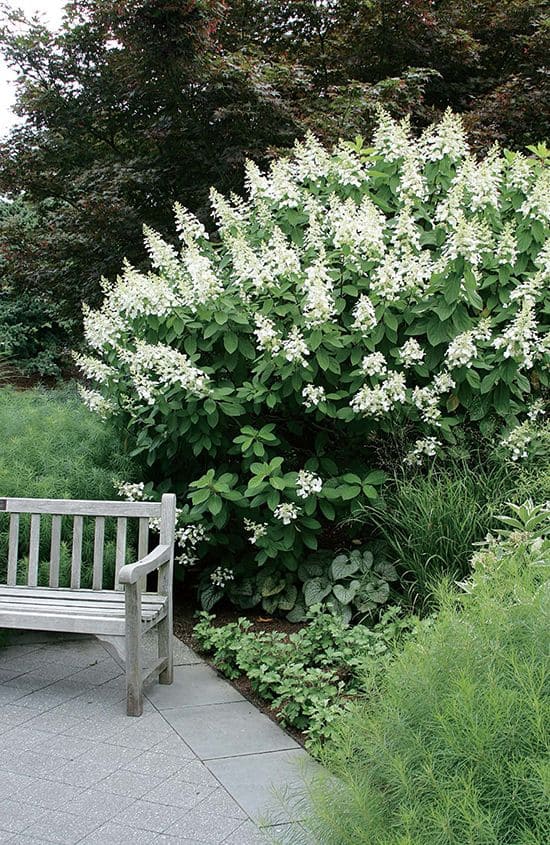
- Growing conditions: Full sun to part shade; average to rich soil
- Size and shape: 8–12 feet tall; upright and spreading
- Best uses: Late-season interest, privacy screens, wildlife gardens.
‘Tardiva’ is a late bloomer, often flowering in late summer when other hydrangeas are winding down.
Its lacy white blooms attract pollinators and transition to russet-pink as fall sets in. Minimal pruning and drought tolerance make it an easy keeper.
12. ‘Zinfin Doll’ Hydrangea (Hydrangea paniculata ‘Zinfin Doll’)
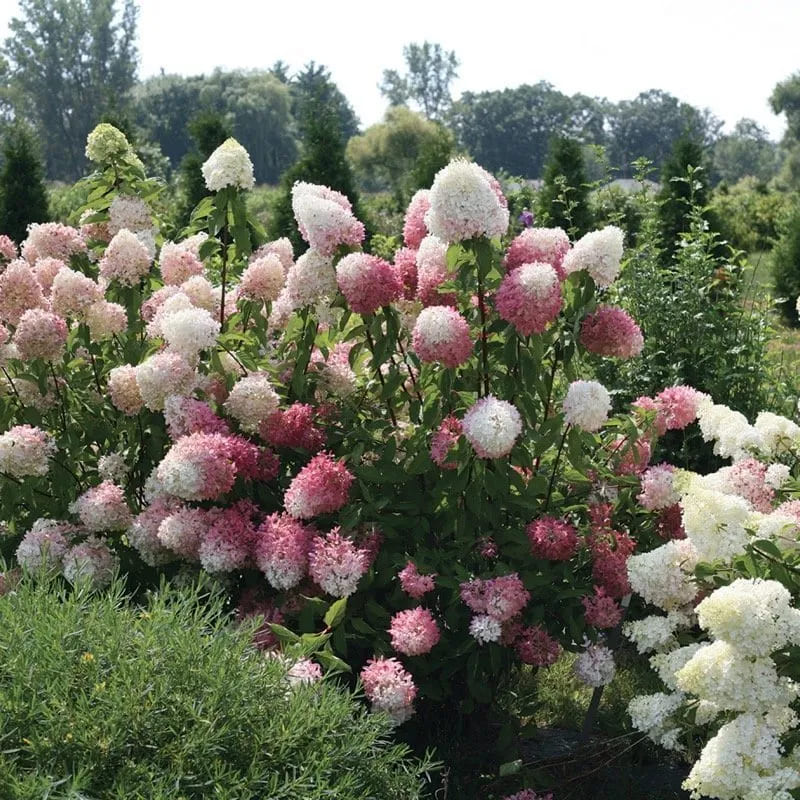
- Growing conditions: Full sun; moist, fertile soil
- Size and shape: 6–8 feet tall and wide; upright and full
- Best uses: Cottage gardens, blush-colored arrangements, floral backdrops
‘Zinfin Doll’ begins with white flowers that blush into deep pink, giving a two-tone effect that evolves through the season.
It’s romantic, tough, and floriferous. Prune back in spring for the strongest stems and fullest blooms.



